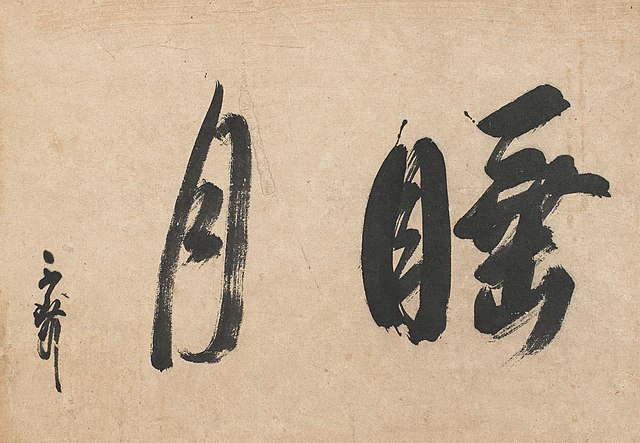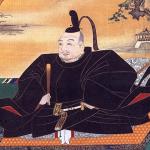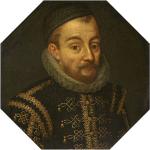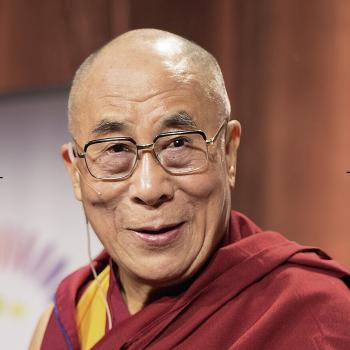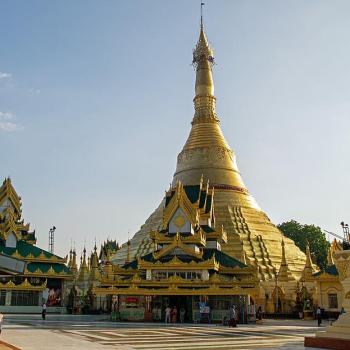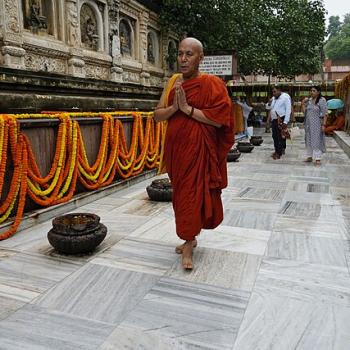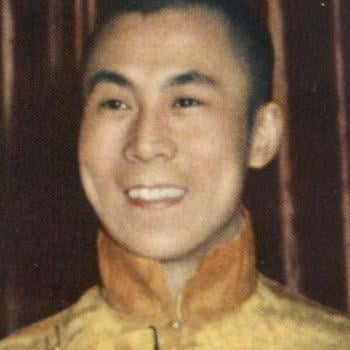I’ve been writing about Japan in the 16th and 17th centuries, and before moving on I want to tell the poignant story of the warlord and the tea master. In this story the warlord is Toyotomi Hideyoshi (1537-1598), who is discussed in the post about the 26 martyrs of Nagasaki. The tea master is Sen no Rikyū (1522-1591). Rikyū was not just a tea master. He was the tea master who set the rules of the ceremony as it is practiced today.
The Japanese tea ceremony, which was adapted from a Chinese ceremony, has a deep association with Zen Buddhism. Legend has it that the green matcha tea used in the ceremony was first brought to Japan from China by Myōan Eisai (1141-1215), who also brought Zen from China and introduced it to Japan. Eisai studied in China with a prominent master of the Linji school of Chan Buddhism; Chan became Zen in Japanese. He returned to Japan in 1191 (allegedly with tea) and is believed to have been the first Japanese Zen master.
Another Zen master, Murata Jukō (1423–1502) is credited with establishing the tea ceremony as a spiritual practice that also reflected Japanese culture and aesthetics. Jukō emphasized that the ceremony must be conducted with harmony, respect, purity, and tranquillity. He also encouraged the use of simple, unglazed Japanese stoneware instead of more elegant Chinese tea bowls. The formal tea ceremony became a mindful and deeply intimate art in which every gesture and movement by all participants follows form and tradtion.
The Warlord and the Tea Master: Sen no Rikyū
We don’t know a great deal about the early life of Sen no Rikyū. He was a lay Zen practitioner who studied Zen for a time at the historic Daitoku-ji temple in Kyoto. He began formal study of the tea ceremony at the age of 19 under a renowned master named Takeno Jōō. He married at the age of 21 and had several children. Over the years Rikyū must have gained a significant reputation as a tea master, because in 1579, at the age of 58, Rikyū became tea master for Oda Nobunaga. We’ve run into Nobunaga a few times on this blog already. See, for example, “Ikkō-ikki: Buddhism And The Japanese Peasant Revolts.” He was the most powerful warlord in Japan during a time in which the central government was barely functioning.
Oda Nobunaga was a man who spent most of his time making war to bring all of Japan under his control. It might seem odd that such a man would employ a tea master. In the 16th century the formal tea ceremony had become popular with elites and a ritualized means for aristocrats to forge bonds and establish hierarchies. For Nobunaga, employing a highly regarded tea master demonstrated his exalted social status.
And what does a tea master do? It’s more than just making and serving tea. The ambience of the ceremony is critically important and follows exacting standards. These standards extend to the gardens and exterior of the tea room. There are strict rules about how the tea room is organized and decorated. There are customs about the utensils used. And then the making and serving of the tea is an elaborate choreography in itself. The master must be knowledgable about pottery, laquer work, and other crafts; flower arranging; calligraphy; gardening; and Japanese architecture. And the master must also know the Zen teachings behind every part of the ceremony. Oh, and the tea master has to know tea. It takes years to become recognized as a tea master.
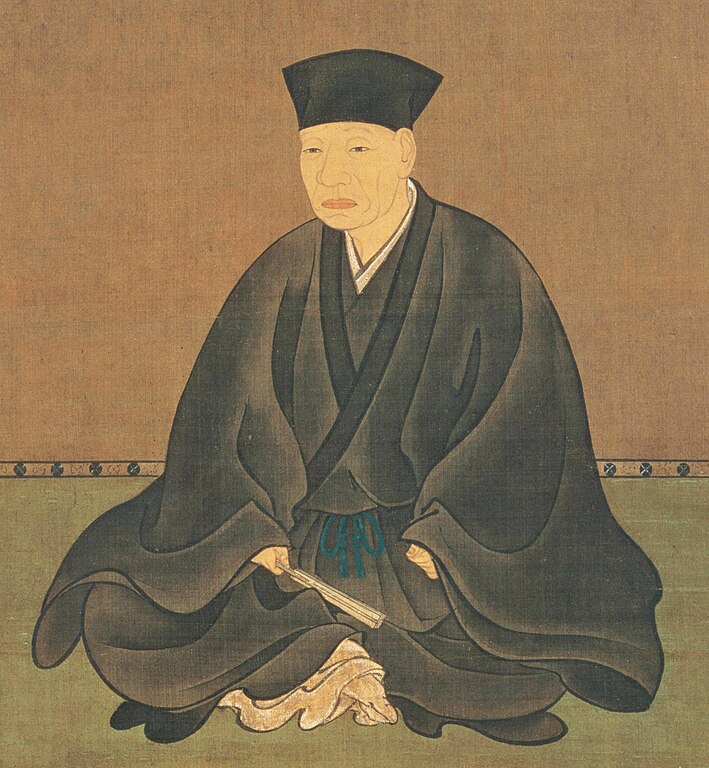
The Warlord and the Tea Master: Toyotomi Hideyoshi
Oda Nobunaga was assasinated in 1582. By 1590 Toyotomi Hideyoshi completed the conquest of all Japan that Nobunaga had attempted and became the de facto ruler of Japan. You can read more about Hideoyoshi in another post, “The 26 Martyrs of Nagasaki.” Sen no Rikyū became Toyotomi Hideyoshi’s tea master. By all accounts the two men forged a strong relationship. Rikyū was part of Hideoyoshi’s inner circle and was no doubt one of the most influential tea masters in history. He officiated at tea ceremonies that are remembered as historic events.
It was during this period that Rikyū introduced many refinements to the tea ceremony that are still observed. He and a tile maker named Chojirō are believed to have collaborated to create Raku tea bowls, These are simple, lightly glazed, no-two-alike earthenware bowls that came to be highly prized. He designed tea utensils, flower containers, and tiny, rustic tea rooms. A scroll displaying calligraphy hangs in every tea room, and Rikyū began the practice of displaying simple, one-line calligraphies rather than long poems requiring many lines. The overall aesthetic is simple and imperfect, to enable us to see the beauty in simple and imperfect things.
We have no record of why Rikyū fell out of favor with Hideyoshi. But in 1591 Hideoyoshi ordered the elderly tea master to commit ritual suicide. Before doing so, Rikyū wrote this poem (translation by D.T. Suzuki).
I raise the sword,
This sword of mine,
Long in my possession
The time is come at last.
Skyward I throw it up!
